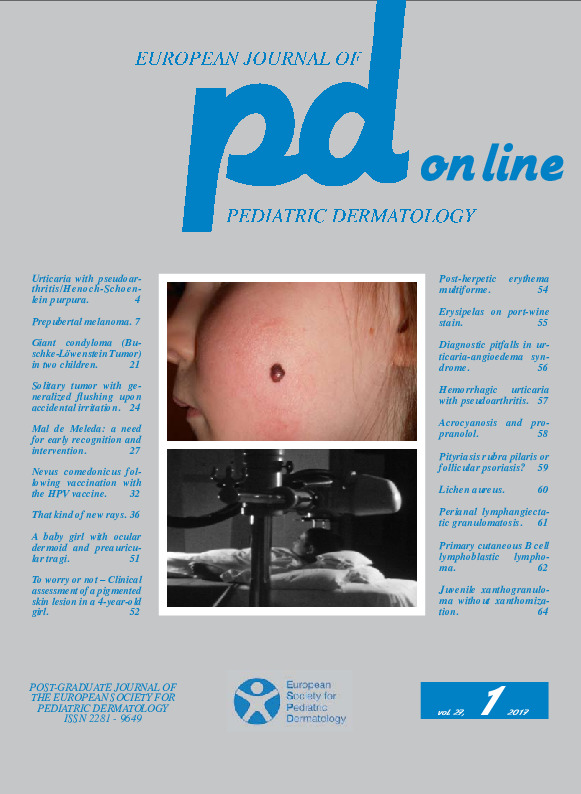Prepubertal melanoma.
Downloads
DOI:
https://doi.org/10.26326/2281-9649.27.1.1306How to Cite
Bonifazi E., Arcangeli F., Argenziano G., Cutrone M., Paradisi M. 2017. Prepubertal melanoma. Eur. J. Pediat. Dermatol. 27 (1):7-20. 10.26326/2281-9649.27.1.1306.
pp. 7-20
Abstract
The incidence of prepubertal melanoma is not raising in children, unlike adolescent and adult (24). Its incidence therefore remains so low that no center is able to do statistics only based on its cases. Over the past 40 years in five Italian Pediatric Dermatology centers 15 cases of melanoma in children aged under 12 years were observed, 4 of which associated with large or multiple congenital melanocytic nevi. The latter, including two cutaneous melanomas arising on congenital melanocytic nevi and 2 meningoencephalic melanomas, started early - average age at diagnosis 18 months - and had poor prognosis quoad vitam. The 11 melanomas arising on normal skin – 8 cases – or associated with small congenital – 1 case – or acquired – 2 cases – melanocytic nevi started at a later age - average age 9.2 years - and had a good prognosis despite average thickness of 2 mm and lymph node involvement in 3/11 cases. These two categories of prepubertal melanoma, though so different from each other, shared the same nodular or ulcerative non specific, often amelanotic clinical appearance. Therefore, they were different and more difficult to be diagnosed as compared with pigmented and usually initially superficial spreading adult melanoma.Keywords
Melanoma, Congenital melanocytic nevus, Neurocutaneous melanosis

